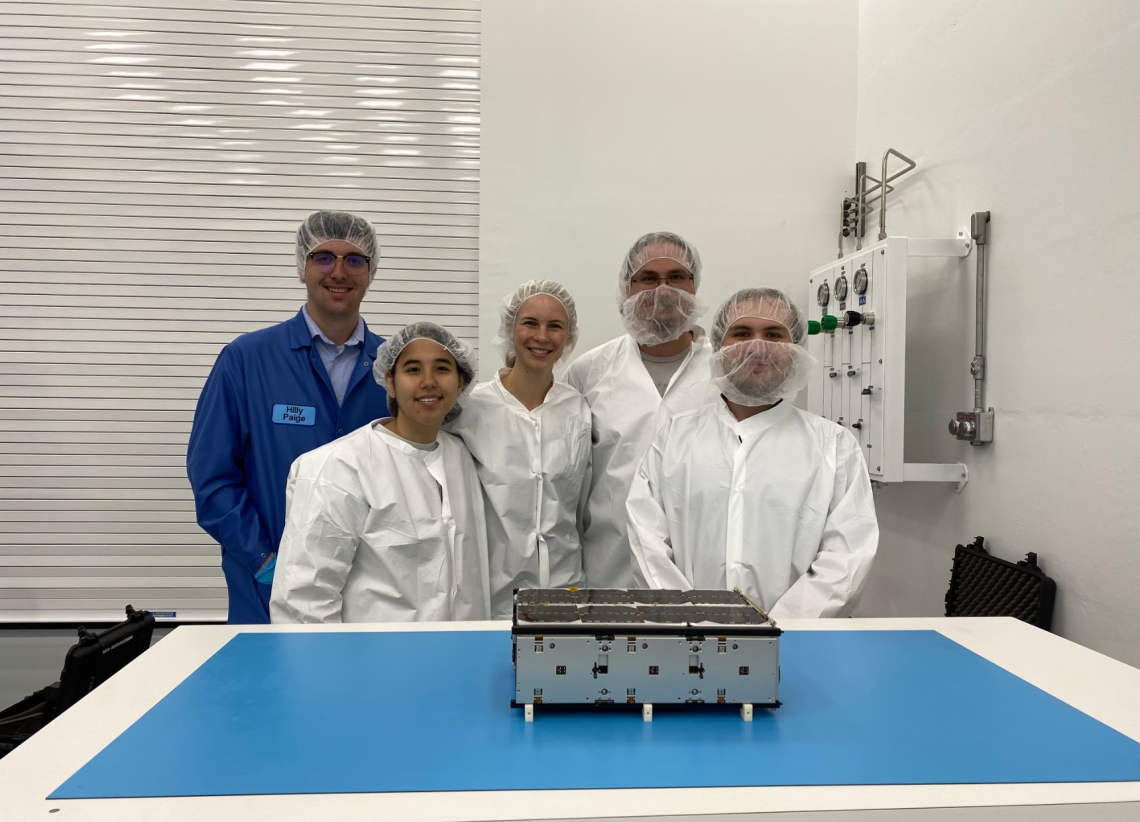Congratulations to the CatSat team for a successful satellite integration at Vandenberg Space Force Base. Next step: orbit!

Pictured: the student team at integration with the CatSat satellite. From left to right: Hilly Paige (a UA DCC), Sarah Li, Shae Henley, Del Spangler, and Walter Rahmer.
At dawn on April 24, 2024, a student-led team from the University of Arizona climbed into a vehicle headed 660 miles across state lines to Vandenberg Space Force Base in California. In their possession: a hand-built satellite the size of a cereal box. CatSat, a type of nanosatellite know as a CubeSat, is the first student-led satellite mission at UArizona. On Tuesday, the team integrated their satellite into the Firefly Alpha rocket that will launch it into orbit sometime in June.
CatSat’s orbit will keep it in constant daylight for six months while it collects high resolution images of the Earth and detects high-frequency signals from HAM radio operators around the globe with its WSPR antenna. The satellite will also be testing an experimental UArizona-patented inflatable antenna, which may pave the way for future small-scale satellites to begin venturing into deep space with inflatable antenna technology. Inflatable antenna technology is an innovation devised by Steward Observatory UA astronomy professor Christopher Walker, who is also the science principal investigator of the mission.
Congratulations to the CatSat team for a successful integration. Follow along on social media for more glimpses into their experience: Facebook / Instagram / X.

Above: the CatSat student team tours Firefly Aerospace's launch site.

